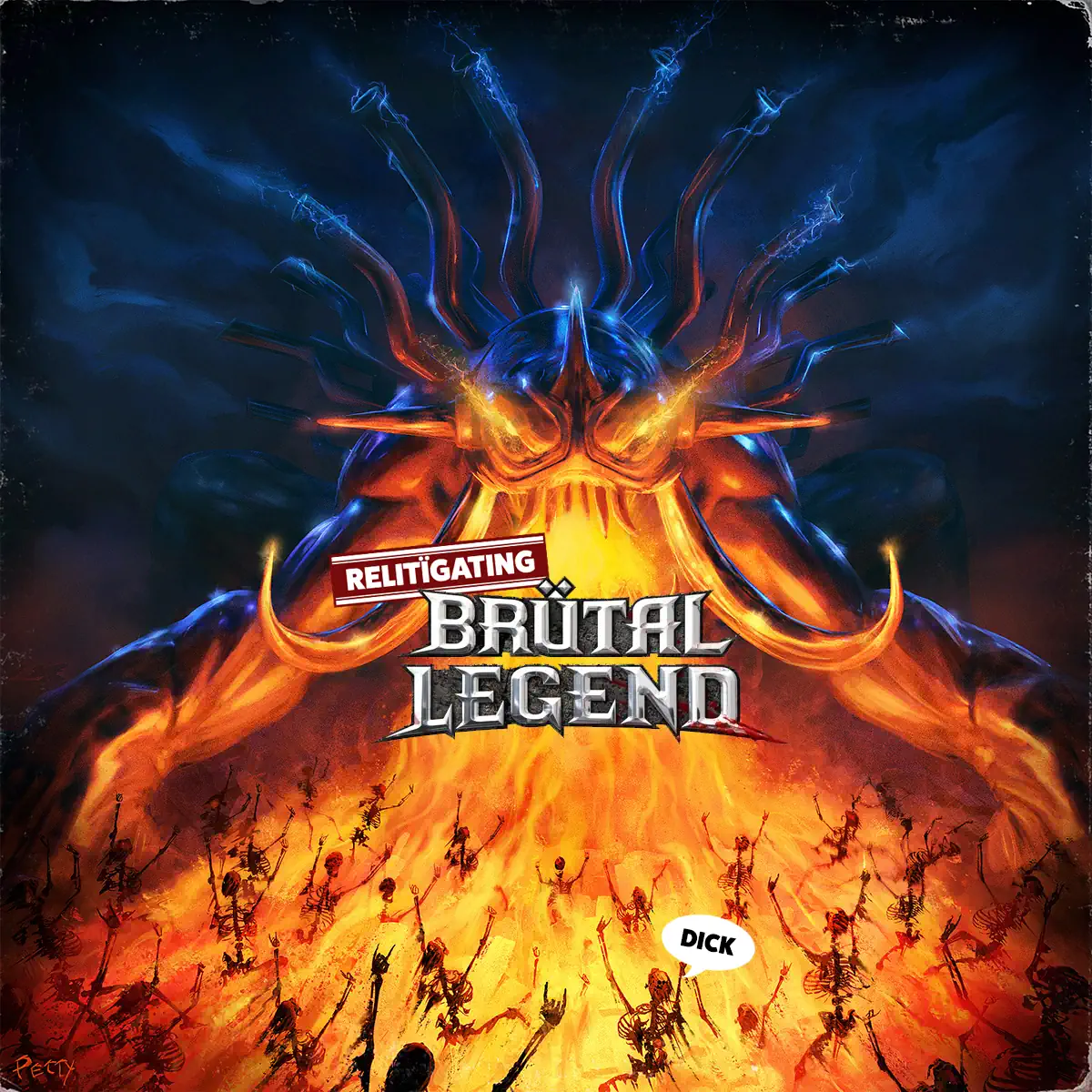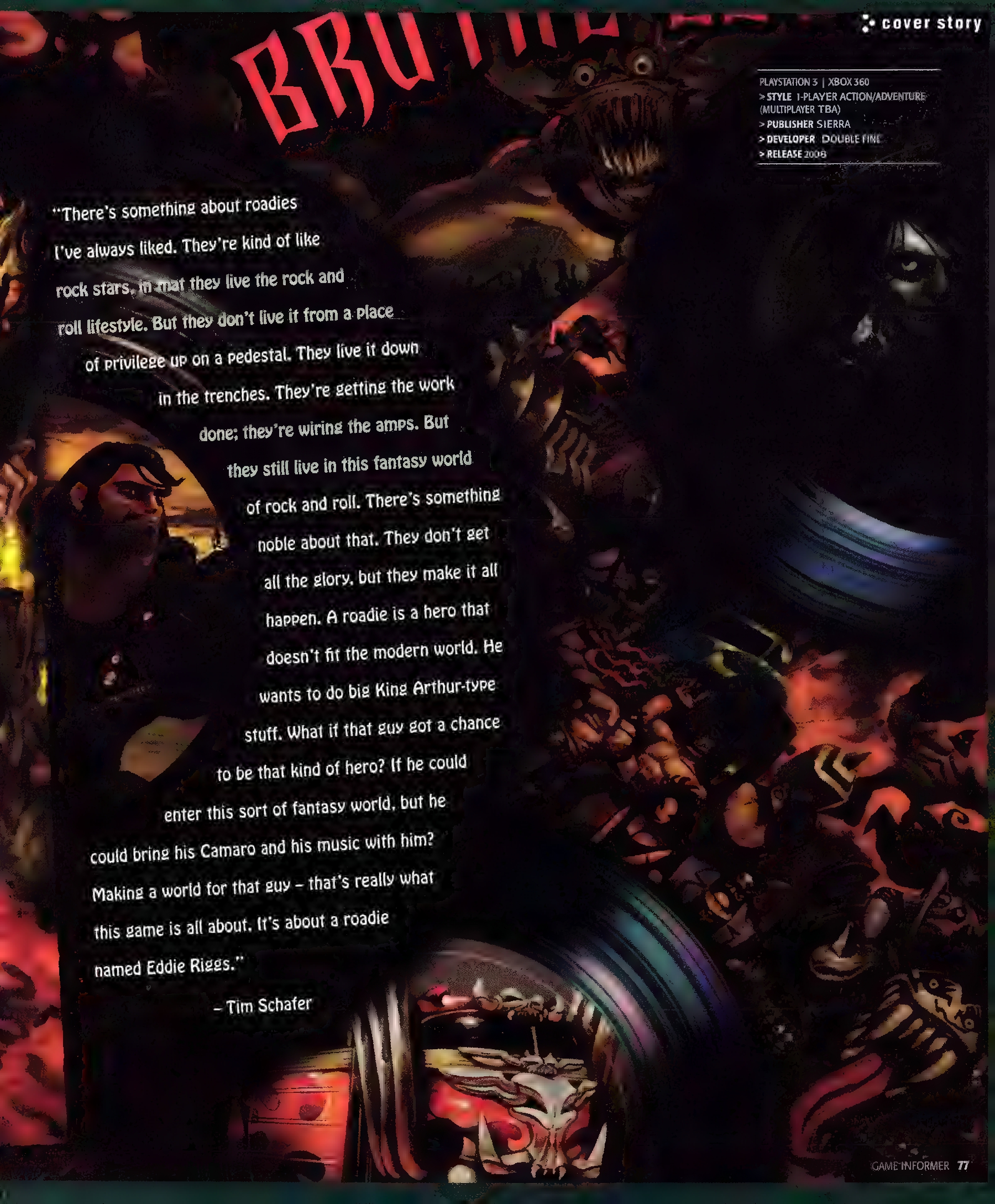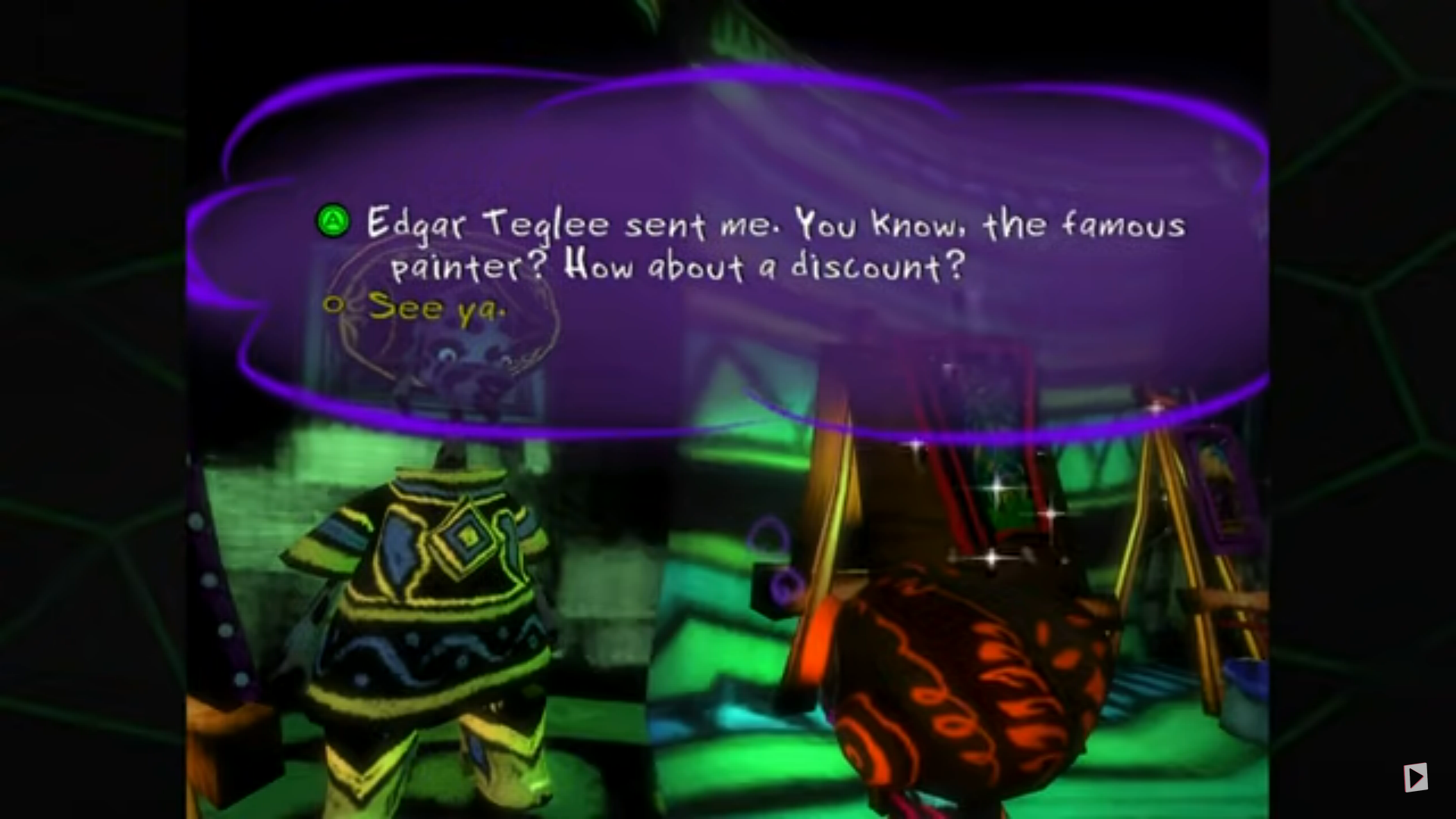Articles

Relitigating Brütal Legend Page Two

Double Fine’s much-anticipated follow-up to their debut title would be inspired by Tim’s childhood love for the worlds suggested by heavy metal album covers. With their Lovecraftian imagery, demonic fantasy-scapes, and vivid preoccupation with chrome, they tended to be far richer and more evocatively bizarre than anything the comparatively disappointing, bound-by-budget music videos could live up to. It seemed a captivating and fairly original setting to realize and immerse a player in -- a come-on which even with a single product under its belt was seen as a signature of the studio.
So Tim had his world – what would be the mechanics for navigating through it? For all its “weirdness,” Psychonauts’ identity as a 3D platformer offered audiences a certain familiarity. Its gameplay wasn’t worlds apart from the likes of Mario and Zelda, albeit with a level of story depth and consideration toward character (not to mention dialog trees and an inventory) that betrayed the team’s collective resume in graphic adventure games.

For Brütal Legend, Tim would turn to a more esoteric influence: Herzog Swei, a 1989 release for the SEGA Genesis that is considered one of the earliest real-time strategy games. Controlling a flying “mech,” the player purchases and commands ground units with the goal of destroying the enemy’s base, constant micromanagement of resources and the barely autonomous army being essential to victory. (I’ve long found it amusing that the story-first priorities of many of Tim’s games have led critics to accuse the him of being a writer trapped in the wrong medium. Would anyone but a gamer have selected such a taking off point?)
In Brütal Legend’s world, the RTS matches would be expressed as “stage battles,” with roadie hero Eddie Riggs taking to the air by sprouting bat wings, directing his army of headbangers, dominatrixes, and other “band members” from the sky when he’s not leading the troops into battle himself armed with his trusty battleaxe and face-melting guitar. With these stage battles seen as the core mechanic and with Double Fine needing to get their arms around an area where they couldn’t call on experience (not dissimilar to the lengthy upfront time spent nailing down the platformer mechanics for Psychonauts), Brütal Legend was in fact built as a multiplayer game first. These RTS battles were very much the horse and not the cart.
In shopping the game around, Tim found that the heavy metal theme went from barrier to hook in the wake of the popularity of Guitar Hero, and in September 2006, it was announced that Double Fine had found its partner for its next project in Vivendi Games, parent company of Blizzard, which would be publishing the game under its Sierra Entertainment label. The irony of working hand in hand with the resuscitated brand of LucasArts’ old rival wasn’t lost on Tim. Nary a hint about the game’s concept was made public, but behind the scenes Double Fine had already delivered a functional stage battle to its publisher. Concerned about the commercial appeal of an RTS game, Vivendi encouraged Double Fine to expand the single player campaign, originally envisioned as a glorified tutorial for the stage battles.
Here in the civilian world, the untitled game remained shrouded in mystery for another year, with little to go on but meaningless assurances that it was “next-gen” and some provocative job openings at Double Fine that pointed to a multiplayer aspect. In the Fall of 2007 came the official announcement, revealing the title (Footnote: “The name was one of the very first things I thought of, over fifteen years ago. I was riding a bus, thinking about a game that would be the complete opposite of what we were working on, The Secret of Monkey Island. And Brütal Legend leapt into my head. I've been hanging on to that name ever since.” - Tim), a release window of 2008, target platforms of Xbox 360 and PlayStation 3, and this announcement trailer:
The first round of press included a spread in the November 2007 issue of Game Informer and an interview Tim gave to IGN. There was even a gimmick where a vinyl record with a backwards message and accompanying riddle was sent to the gaming site Kotaku (Footnote: I guess we know where we stand.) for its readership to parse.
The general reaction from the Double Fine faithful to these first impressions was enthusiastic, and the drastic departure in style from Psychonauts confirmed Double Fine as a studio uninterested in repeating itself. Conspicuously absent, however, was any real sense of the gameplay. Brütal Legend was being vaguely styled as an “action title,” with Vivendi privately advising Double Fine that RTS was “a dirty word” in the console space. They were happier to highlight celebrity participation: Jack Black (Footnote: Appropriate casting for obvious reasons, but who also happened to be a Double Fine fan in his own right, unbashful about sporting a Whispering Rock T-shirt at events.) had been tapped to voice the lead character, while the trailer gave the accurate impression that licensed music from prominent metal bands was going to deck out the game’s soundtrack.
Behind the scenes, Double Fine’s accommodation of Vivendi’s request to beef up the game’s story mode had expanded the schedule substantially, though the relationship with the publisher seemed to remain a happy and collaborative one. Unfortunately, Double Fine’s prior luck with publishers did not truly undergo a turnaround: At the end of 2007 Vivendi merged with Activision to form Activision Blizzard, and while Blizzard largely retained its autonomy, it was an ominous turn of events otherwise for Vivendi’s lineup of in-development titles. After each game’s commercial prospects was re-assessed by scrutinizing eyes, a resultant ”streamlining” saw all but a few franchises on the slate cancelled, the scope-broadened Brütal Legend very much included.

